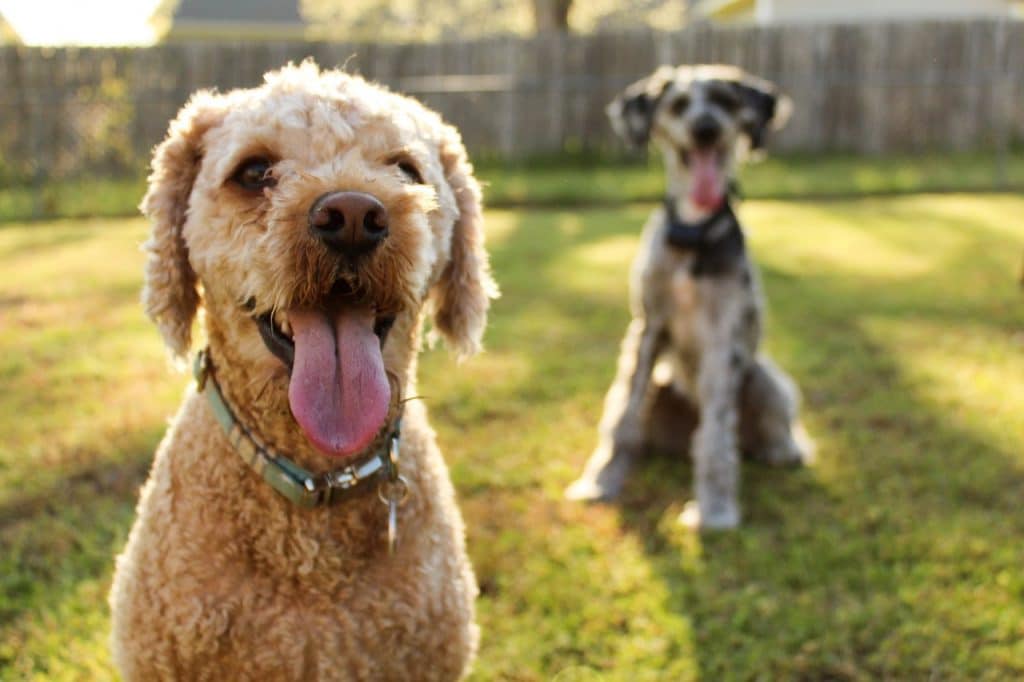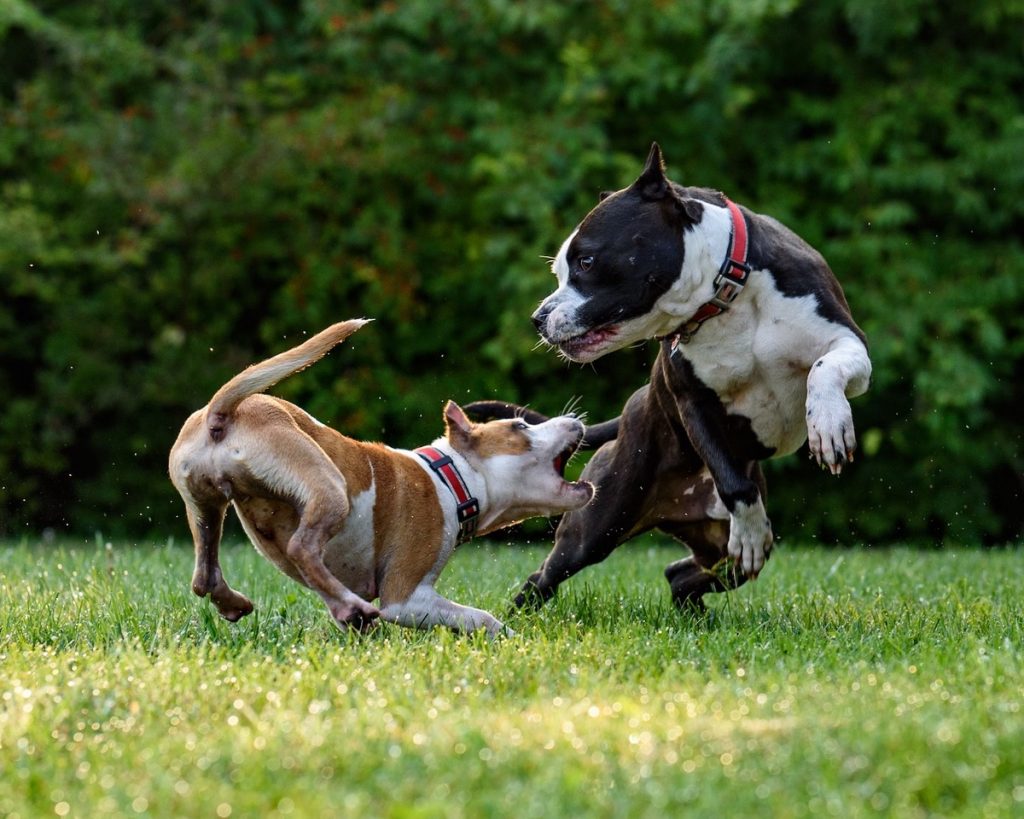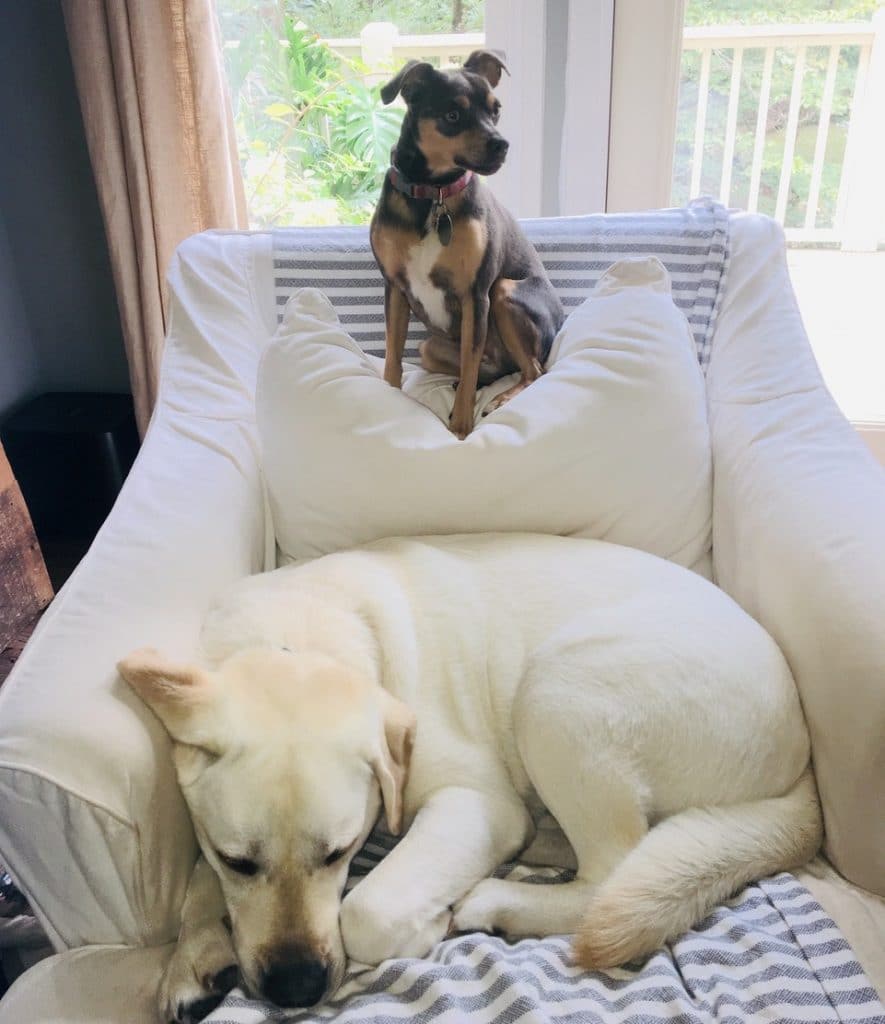5 Ways to Manage a Multi-Dog Household


When it comes to dogs, more isn’t always merrier. Sometimes the dynamic of a multi-dog household can be a lot to handle. While it may be difficult to understand, dogs have preferences for each other and different behaviours. We tend to see dogs are either one thing or another; either they’re very social with other dogs or they’re not social at all. Either they’re intimidated by bigger dogs or they’re not. But in reality, there’s a scale and every dog is different. The sooner we learn this and stop expecting our dogs to behave a certain way, the easier it becomes to manage a multi-dog household. These five tips may help:

1. Manage Triggers
Mealtime can be a big trigger for some dogs. If your dogs are working on tolerating each other, feeding separately can make that easier. Eating requires you to be relaxed but it’s hard to rest and digest if you’re stressed. If you want your dogs to get along, don’t force them to eat near each other until you know how much they’ll tolerate it.
Treats can also be an issue. Make sure they’re instant and go from your hand to their mouth. Every dog enjoys treats differently so it’s up to you to read the situation and do your best to eliminate any potential fights that may break out between dogs based on their eating habits, timelines or pet peeves.
Toys can be a valued asset and distraction but they can also be the cause of some serious bickering and jealousy in a multi-dog household. If sharing toys is an issue with your dogs, consider supervised play time instead of allowing toys to be used whenever the dogs want.
2. Be Aware of Conflict Areas
Doorways and narrow spaces can be the cause of a lot of conflict because they’re so enclosed. Corridors, landings, stairways etc are all areas that may cause issues if multiple dogs are in those spaces at the same time. If two dogs are already struggling to get along, everything is multiplied by 1000 in a confined space so do your best to avoid confrontations in those areas. Place food bowls, water and beds in open spaces so there’s no extra tension during meal or bed time.
3. Don’t Underestimate Alone Time
Every dog should always be able to get away from the others if they need to. It’s not healthy for dogs to be together 24/7. Crates or having dog friendly spaces in separate rooms can help dogs put space between each other when it’s needed. They want to spend time with you so don’t deprive them of that, just ensure you’re giving them the alone time they need when they’ve had enough contact.
4. Control the Sleeping Situation
Personal space is a necessity. Imagine how you would feel if your sibling just slept in your bed one night and was constantly fighting for a chance to sleep there every night. A loose or uncertain sleeping situation can cause a lot of aggravation and stress, especially when multiple dogs are trying to get comfortable. Each dog should have their own personal space. Whether it’s in one room in separate beds or in different rooms altogether based on where they’re most comfortable.
5.Recognize Teachable Moments
Multiple dog households can be a breeding ground for insecurity and jealousy. Teaching dogs that compete for affection when enough is enough, or keeping group petting at a minimum can help. This will allow them to understand that they don’t need to compete for your love. Your job is to teach them so it does you no favours to oblige them every single time they demand love (especially at the expense of the other dogs). Neither, though, is it ok to completely ignore them. Don’t accept impatience or bad manners. Teach them that good things come to those who wait if you’d like for them to be patient and polite. Remember that they aren’t misbehaving on purpose, they just haven’t learned yet so be patient with them as a multi-dog household can be difficult to navigate for our four legged friends.
